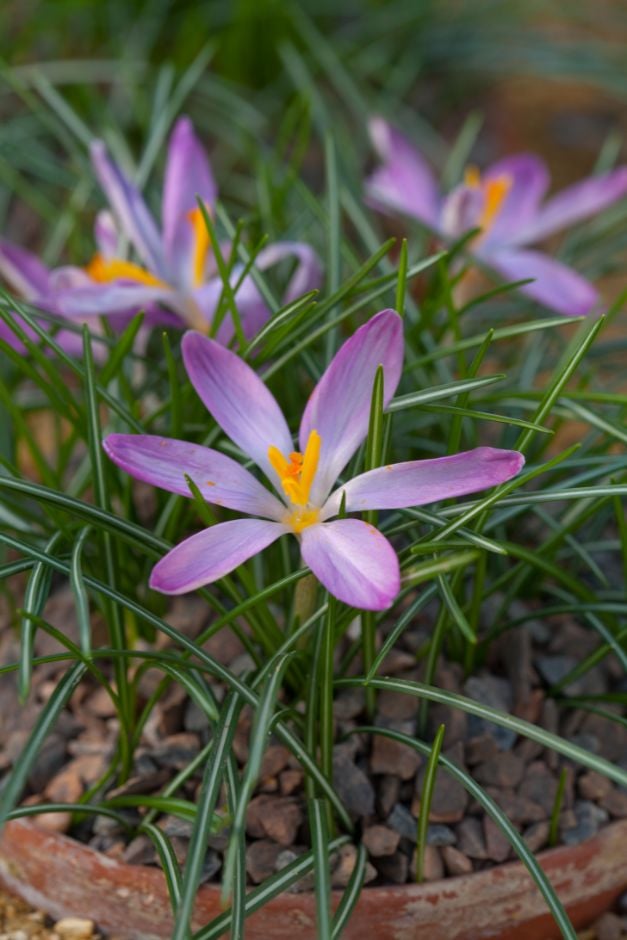Crocus tommasinianus 'Barr's Purple'
early crocus 'Barr's Purple'
A cormous perennial 8-10cm high with tufted green leaves with a central silvery-white stripe, and rich purple-lilac flowers, silvery outside, with orange stigmas and stamens, from late winter to spring; crocuses are a good source of pollen for honeybees early in the season
Size
Ultimate height
Up to 10cmTime to ultimate height
2–5 yearsUltimate spread
0–0.1 metreGrowing conditions
Moisture
Moist but well–drained, Well–drainedpH
Acid, Alkaline, NeutralColour & scent
| Stem | Flower | Foliage | Fruit | |
| Spring | Orange Grey Silver Purple | Green Grey Silver | ||
|---|---|---|---|---|
| Summer | ||||
| Autumn | ||||
| Winter | Orange Grey Silver Purple | Green Grey Silver |
Position
- Full sun
Aspect
South–facing or West–facing or East–facing
Exposure
Exposed or Sheltered Hardiness
H6Botanical details
- Family
- Iridaceae
- Native to GB / Ireland
- No
- Foliage
- Deciduous
- Habit
- Tufted
- Potentially harmful
- Ornamental bulbs - not to be eaten. Wear gloves and other protective equipment when handling. Pets: Ornamental bulbs - not to be eaten - see the HTA guide to potentially harmful plants for further information and useful contact numbers
- Genus
Crocus are dwarf, deciduous perennials growing from a corm, with linear leaves usually with a silvery central stripe, and goblet-shaped, sometimes fragrant flowers in autumn or early spring
- Name status
Accepted
How to grow
Cultivation
Plant 8-10cm deep in autumn in gritty, poor to moderately fertile, well-drained soil, in full sun; C. tommasinianus and its forms increase freely, and are suitable for naturalising in grass, see bulbs: naturalising. See crocus cultivation for more advice
Propagation
Propagate by removing cormlets during dormancy; for more advice, see bulb propagation
Suggested planting locations and garden types
- City and courtyard gardens
- Gravel garden
- Patio and container plants
- Wildlife gardens
- Cottage and informal garden
- Flower borders and beds
- Banks and slopes
- Wall side borders
Pruning
No pruning required
Pests
May be susceptible to rodents and birds
Diseases
Generally disease-free, corms may rot in storage
Love gardening
Sign up to receive regular gardening tips, inspiration, offers and more
View our Privacy Policy
Get involved
The Royal Horticultural Society is the UK’s leading gardening charity. We aim to enrich everyone’s life through plants, and make the UK a greener and more beautiful place.

